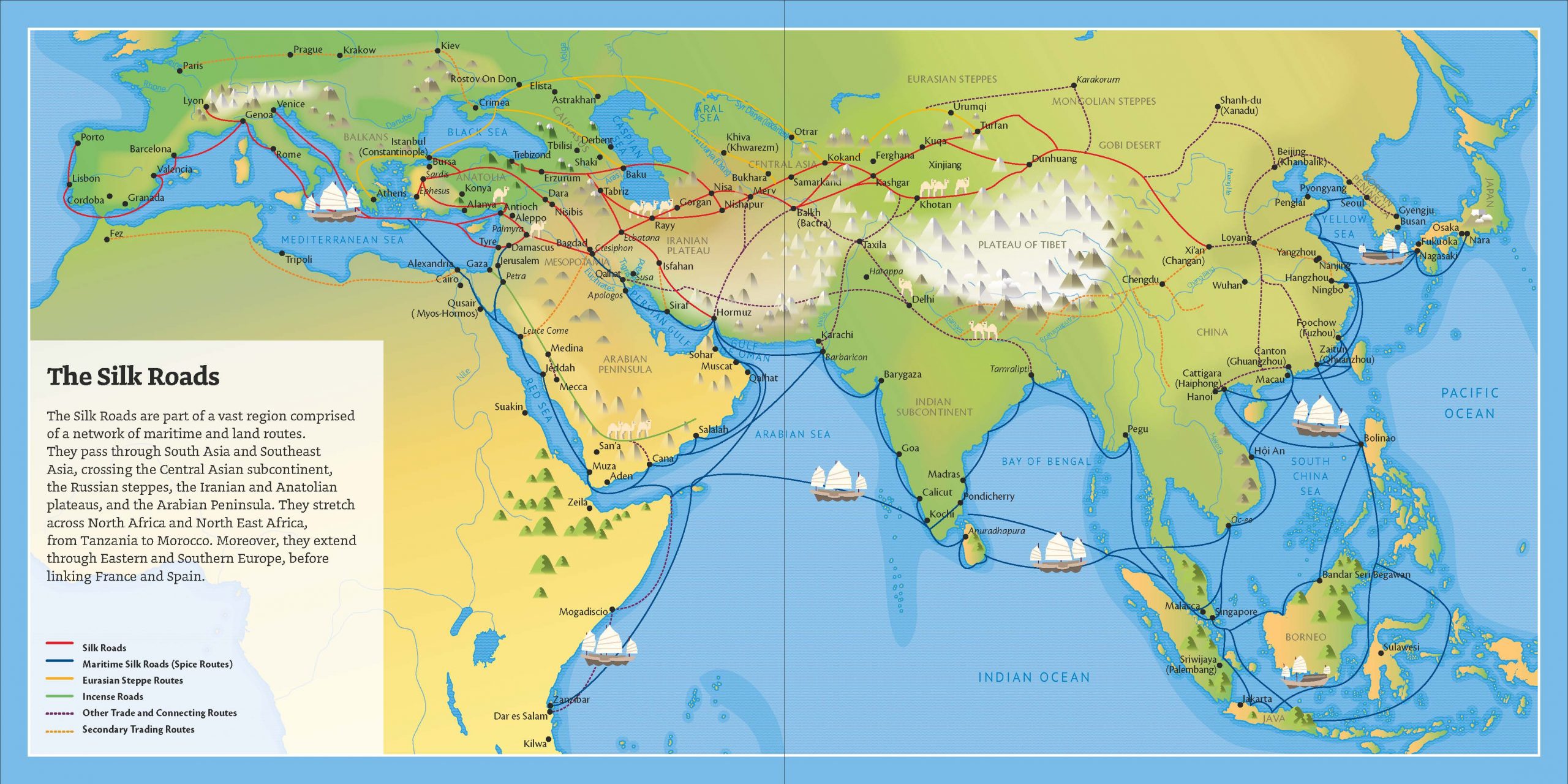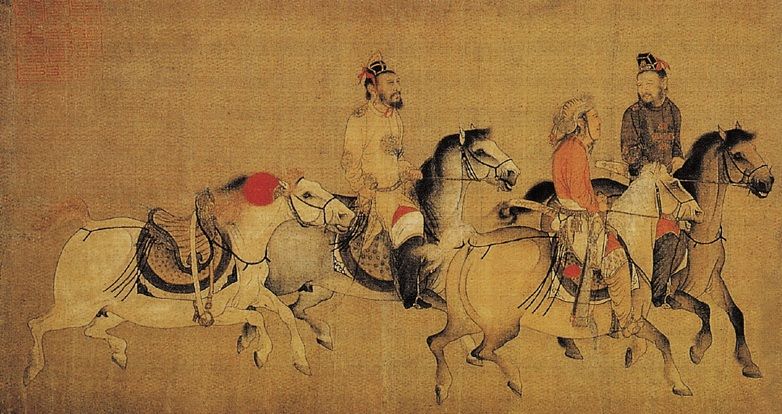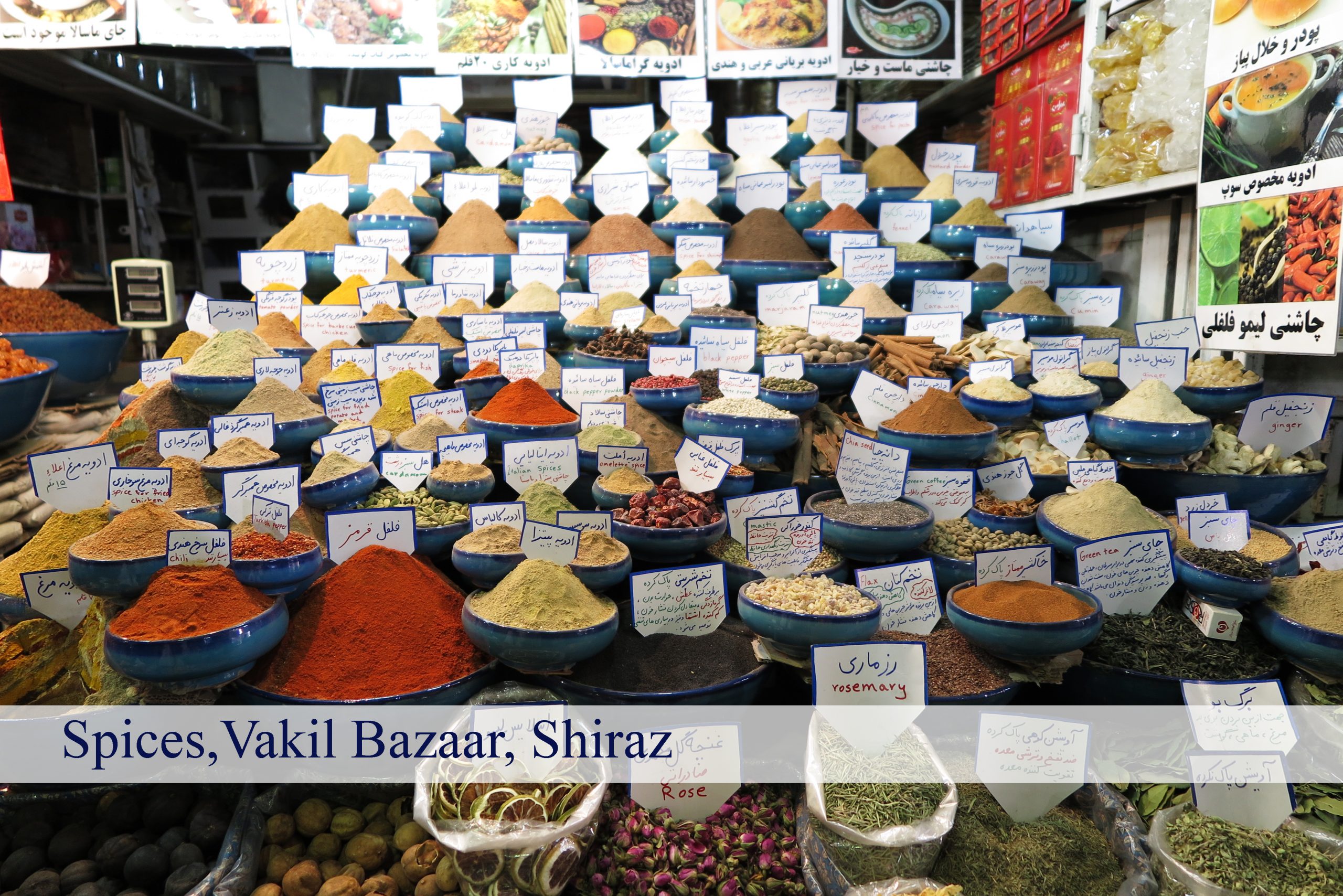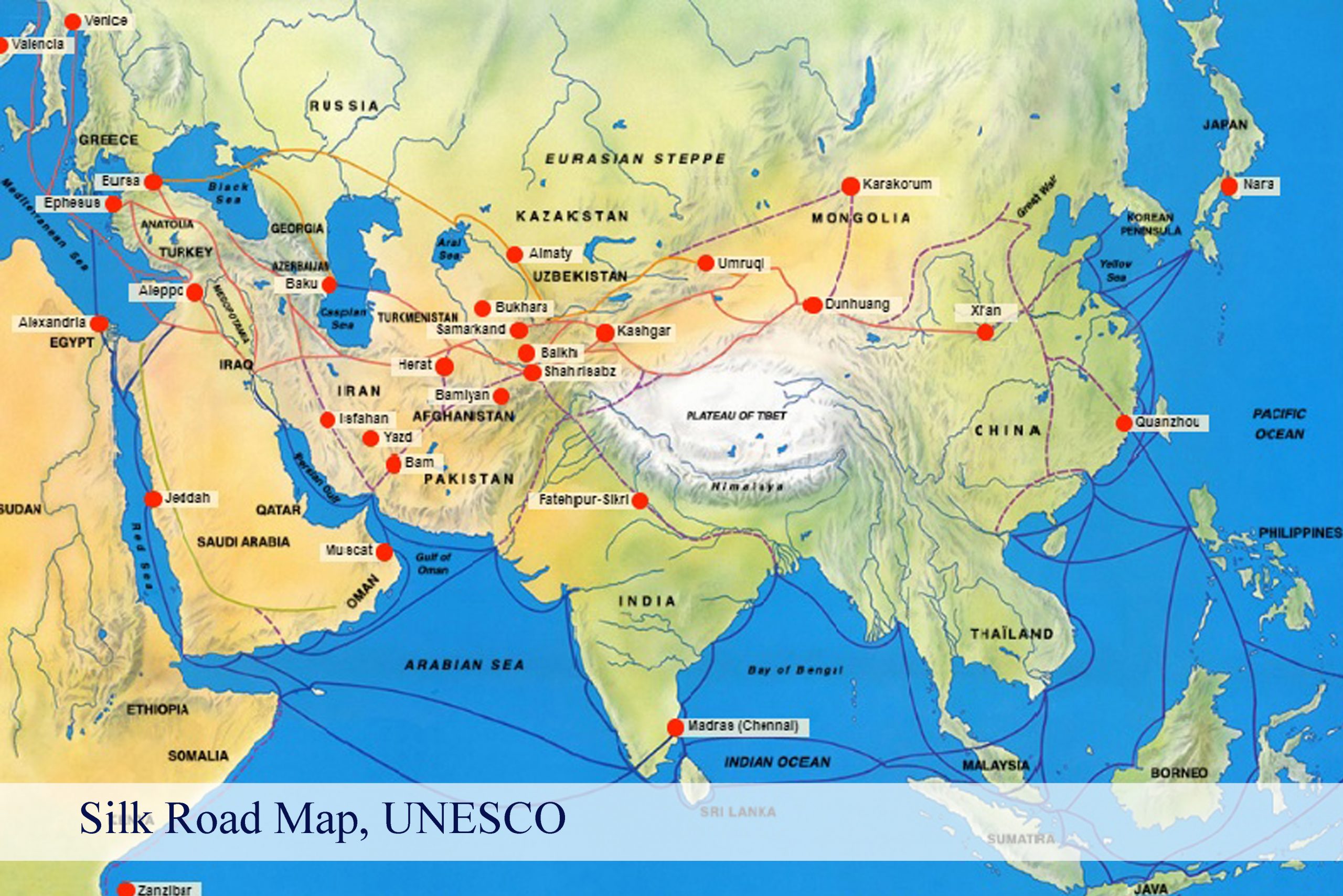Silk Road is the most ancient commercial road in the world. So, it has played a very important role in history for its relations among the different nations. This road that begins in Europe and ends in China, established when the Han Dynasty in China officially opened trade with the West in 130 B.C.
The Silk Road routes remained in use until 1453 A.D., when the Ottoman Empire boycotted trade with China and closed them. The transport of goods along this road goes back to 300 years before the Silk Road, when the Great Darius, the Achaemenid Empire, established the Royal Road, connecting Susa to Sardis with more than 1600 miles long.

Silk Road trading goods
It is very difficult to estimate the importance of the Silk Road in history. Religion and ideas spread along the Silk Road just as well as goods. Towns along the route grew into multicultural cities. The exchange of information gave rise to new technologies and innovations that would change the world. The horses introduced to China contributed to the might of the Mongol Empire, while gunpowder from China changed the very nature of war in Europe and beyond.
Diseases also circulated along the Silk Road. Some research suggests that the Black Death, which left Europe devastated in the late 1340s C.E.,it likely spread from Asia along the Silk Road.
The name “Silk Road” is due to the popularity of Chinese silk among tradesmen in the Roman Empire and elsewhere in Europe, but it was not the only important export from the East to the West. Here are eight of the most important trade goods that fueled centuries of Silk Road cultural exchange:
Silk
This road is called Silk Road for the reason that, first produced in China as early as 3,000 B.C., was the ideal overland trade item for merchant and diplomatic caravans that may have traveled thousands of miles to reach their destinations.
Horses
Horses were first domesticated in the steppes of Central Asia around 3700 B.C. and transported nomadic tribes that hunted and raided across vast territories that border China, India, Persia and the Mediterranean. Once the horse was introduced into agrarian societies, it became a sought-after tool for transport, cultivation and cavalry.
The silk-for-horse trade was one of the most important and long-lasting exchanges on the Silk Road. Chinese merchants and officials traded bolts of silk for well-bred horses from the Mongolian steppes and Tibetan plateau. In turn, nomad elites prized the silk for the status it conferred or the additional goods it could buy.

Paper
Paper, invented in China in the second century A.C., first spread throughout Asia with the dissemination of Buddhism. In 751, paper was introduced to the Islamic world when Arab forces clashed with the Tang Dynasty at the Battle of Talas. The Caliph Haran al-Rashid built a paper mill in Baghdad that introduced paper-making to Egypt, North Africa and Spain, where paper finally reached Europe in the 12th and 13th centuries .The most important function of paper along the Silk Road was the transmission of new systems of thought, especially religion with texts and books.
Spices
Spices from East and South Asia, like cinnamon from Sri Lanka and cassia from China, were exotic and coveted trade items, but they did not typically travel the overland routes of the Silk Road. Instead, spices were mainly transported along an ancient maritime Silk Road that linked port cities from Indonesia westward through India and the Arabian Peninsula.
Across the Silk Road, spices were valued for their use in cooking, but also for religious ceremonies and as medicine. And unlike silk, which could be produced wherever silk worms could be kept alive, many spices were derived from plants that only grew in very specific environments.

Jade
Jade, the crystalline-green gemstone, was central to Chinese ritual culture. When jade supplies ran low in the 5th millennium B.C., it was necessary for China to establish trade relations with western neighbors like the ancient Iranian Kingdom of Khotan, whose rivers were rich with hunks of nephrite jade, the best variety of jade for carving intricate figurines and jewelry. The jade trade to China flourished throughout the Silk Road period, as did trade in other semi-precious gems like pearls.
Glassware
Westerners often assume that most Silk Road goods traveled from the exotic Far East westward to the Mediterranean and Europe, but Silk Road trade went in all directions. For example, archeologists excavating burial mounds in China, Korea, Thailand and the Philippines have found Roman glassware among the prized possessions of the Asian elite. The distinct type of soda-lime glass made in Rome and fashioned into vases and goblets would have eagerly been traded for silk, which Romans were obsessed with.
Furs
The taiga is the vast stretch of evergreen forest that runs through Siberia in Eurasia and continues into Canada in North America. In the days of the Silk Road, the taiga attracted hardy bands of trappers who harvested fox, sable, mink, beaver and ermine pelts. Genghis Khan cemented one of his earliest political alliances with a gift of a sable coat. By the 17th century, in the waning days of the Silk Road, rulers from the Chinese Qing Dynasty could buy furs from Siberian trappers.
Slaves
Enslaved people were a tragically common “trade good” along the Silk Road. Raiding armies would take captives and sell them to private traders who would find buyers in far-flung ports and capitals from Dublin in the West to Shandong in Eastern China. The slaves became servants, entertainers and eunuchs for royal courts. Slaves were more like an ornament of the life of the Silk Road elite, not a major economic source.

2nd-1st century BC. J.-C.
Nomads from the northern steppes threaten Han China. Its ambassadors, laden with rolls of silk as bargaining chips, set off to seek allies as far as the Ferghana Valley in Central Asia.
1st century BC. J.-C.
Chinese silk arrived in the Roman Empire through Parthian and Kushan merchants. In Rome, the Chinese called the Seres (silky).
16 AD J.-C.
The Roman Senate ordered the prohibition of wearing silk, which the wealthy patricians were infatuated with. Subsequently, Pliny the Elder and Seneca denounce a luxury that burdens the finances of the Empire.
365
Goods, ideas and techniques spread throughout Asia. Buddhism, in particular, spread from Dunhuang, located at the crossroads of several trade routes in northwest China.
4th-5th century
Merchants from Sogdiana (present-day Uzbekistan and Tajikistan), whose capital is Samarkand, have a monopoly on trade in Asia. Their route goes to the Chinese capital, Chang’an (present-day Xian).
618
The advent of the Tang Dynasty made Chang’an the largest city in the world. A huge market brings together thousands of Sogdian, Turkish, Uyghur, Arab, Persian, Indian traders…
8th century
Islam spreads along the roads of Central Asia. More and more traders are Muslims. A civil war breaks up the Tang Empire, which loses the monopoly on silk manufacturing.
12th-13th century
The Mongols pacify the region and secure the road network connecting the Black Sea to the Pacific. However, the sea-lanes, dominated by the Arabs, are gaining ground on land trade.
13th century
European travelers, such as the Franciscan Guillaume de Rubrouck, sent by the King of France (Saint Louis) to Karakorum, and Marco Polo, a Venetian merchant in the service of the Mongol emperor Kubilay Khan, bring back precious stories.
1368
The Ming dynasty gradually isolated China from the West. The country will close its doors to international trade in the 15th century.
1453
The capture of Constantinople by the Ottomans blocks access to the West. Europe began to produce silk and workshops were created in Italy.
15th-16th century
The discovery of new sea routes allows the transport of exotic foodstuffs such as tea, porcelain … The silk routes are losing their importance.
1877
Baron Ferdinand von Richthofen, a German geographer commissioned by Bismarck to design the route of a railway line between Germany and China, coined the term “Silk Road”.
2013
Chinese President Xi Jinping launches the “New Silk Roads” program (“Belt and Road Initiative”). Its goal: to create a global network of strategic infrastructure serving the Chinese economy.
